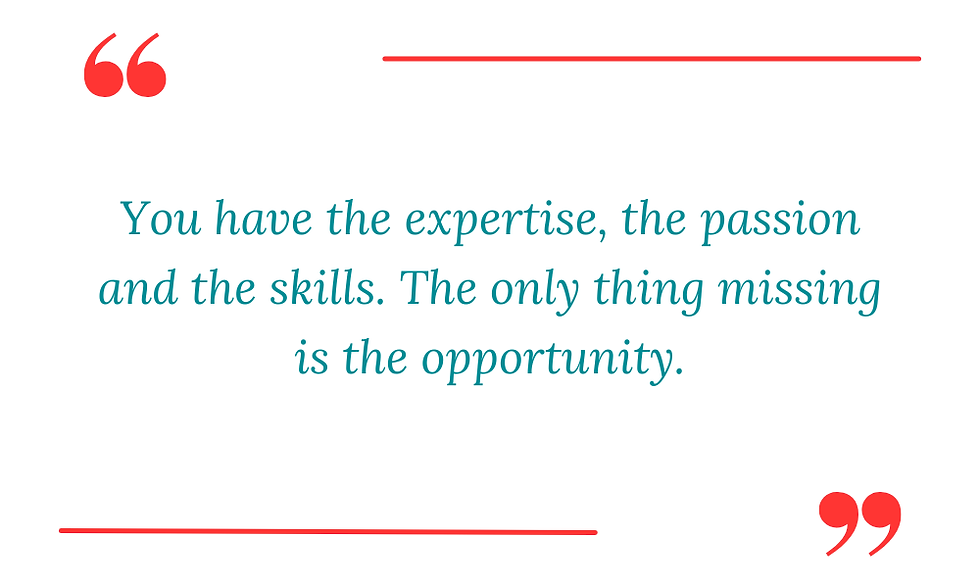Making Your Voice Heard -
- Theresa Miller
- 1 day ago
- 3 min read
Updated: 1 day ago
You’ve Done the Training — Now It’s Time to Speak Up
If you’ve taken part in a TM Media skills workshop, you already know how to play the media game to win.
You know what makes a story newsworthy, how to structure compelling key messages, and how to use your voice, gestures and energy to connect with an audience. You’ve seen how to pivot away from tricky or irrelevant questions and get back on track to deliver quotable responses.
Now you’re ready to step up to the microphone. You've got the expertise, the passion and the story — all that’s missing is the opportunity.

So far, no one has invited you to speak. In an earlier era, you may have stood on a soapbox in Speakers’ Corner in Hyde Park to deliver a stirring sermon. Now you can do all that from the comfort of your own computer or phone. But the range of choices can be bewildering.
Start by researching where your story or idea would best fit and suit the audience.

You could:
write an op-ed piece for a newspaper or online publication,
offer your expert opinion to a trade magazine,
pitch your angle to a radio interview or podcast.
A community radio or podcast interview can be a great way to practise your key messages and hone your interview skills before approaching mainstream media.
You’ll need to pitch a newsworthy angle.
Send a media release with some attention-grabbing statistics, talking points, quotes and key messages that radio producers and editors can grasp quickly.
If you feel confident in your writing ability, you may want to pitch a written article on your research or story idea to a magazine/newspaper/ online platform.
However, getting noticed among the 200–300 pitches in an editor’s daily or weekly inbox is the first hurdle.
Pitching tips:
Ensure you spell the editor’s name correctly. (You’d be surprised how many don’t.)
Read their magazines/platforms and understand the sorts of stories they run.
Keep your pitch short and snappy, via email, not social media.
If you don’t hear back after a week, send one short enquiry.
Don’t send a finished article; this might be a waste of your time and theirs.
If you are commissioned to write an article, keep to the brief. Don’t send more words than required, and file before the deadline. If your idea is rejected, don’t take it personally. It might be a great idea, but it may not fit the content mix that week or month.
If you’re promoting your book, service, cause, research or some other issue, it’s likely you won’t be paid for the article; however, the PR can be invaluable.

If a news editor doesn't green-light your idea, research alternative platforms.
Think about where your audience is and be strategic about linking your offer to bigger topical issues, recent research or partnering with other parties. And don’t discount the power of old-fashioned face-to-face networking.
Another approach is to start your own Substack newsletter or pitch to one of its writers to interview you. Substack is a fast-growing writing platform featuring newsletters and blogs on a vast array of topics. Some content is free, although most is available to subscribers only.
If you’re an academic, you could pitch to The Conversation, an online publication written by academics and journalists. If you’re a not-for-profit organisation, consider sitting on an expert panel, particularly if there will be philanthropists and policymakers in the audience.

Despite some digital marketers claiming the media release is dead, it’s still one of the best ways to reach the right journalist, editor or producer to pique their interest.
Download my easy-to-follow template for a media release plus workbook, a real life media release example plus the essential rules for the follow-up telephone pitch.
Once you’ve sent your media release to the right people, follow up with a phone call to the journalist, TV/ radio producer or podcaster to see if they’d like to interview you. If you get the green light, craft your key messages using the TM Media structures and practise them out loud.
However, daunting it might seem, if you have a compelling story to tell that a certain audience needs to hear, you will find a way. Persistence outstrips all virtues.

Download the media release template, workbook, media release example and golden rules for pitching here.




Comments